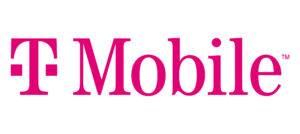UbiFi is widely available in rural areas of the US and offers low-monthly service. Thus, It lowers the barriers for rural customers who need low-latency connections for activities like playing online games or using video chat.
Although UbiFi is portable, its equipment doesn’t have a battery option, so you can’t wander far from an outlet while you can take it with you. It uses AT&T’s 4G network, one of the largest networks, but it has no other network options.
One major pitfall in UbiFi’s otherwise affordable plan is the hefty initial setup cost of $314.99. This cost includes purchasing a router, so you don’t have to worry about equipment fees later on, but this can be a major hurdle for those looking to use UbiFi as a budget option.
4G LTE internet specs and features
4G LTE internet providers offer two distinct plans: direct-from-carrier plans and mobile virtual network operator (MVNO) plans.
4G is the fourth generation of cellular technology and its associated requirements. 4G LTE (long-term evolution) refers to networks that use 4G technology but are still working toward meeting the speed requirements for 4G. Most 4G networks still fall into the category of 4G LTE.
Direct-from-carrier plans, like those offered by T-Mobile and Verizon, are provided through the provider that owns the network infrastructure. This allows these providers to offer plans at lower prices and higher speeds.
MVNOs buy data from the big carriers (AT&T, Verizon, and T-Mobile) and resell it to their customers. This usually means higher and more variable prices, but it also means that a single MVNO carrier can offer service on several different networks, giving MVNOs a much wider footprint.
Portability is one of the main differences between direct-from-carrier plans and MVNOs. Carriers can offer lower prices because home 4G plans are tied to your home address, allowing them to manage network traffic more efficiently. Home 4G equipment can also be placed in the part of your home with the best signal, providing a more reliable connection.
MVNOs, on the other hand, generally offer mobile internet hotspots that you can take with you in an RV or set up in a hotel on a business trip. Since these plans are typically more expensive, we suggest that you choose a home 4G plan unless portability is important enough for you to justify the additional cost.
Additionally, not all portable internet is created equal. Providers that offer equipment that can run on batteries make it much easier to take your internet on the road. Some providers also provide a variety of devices or the option to buy your device, allowing you to customize your equipment to your specific needs.
Although carriers like T-Mobile and Verizon have extensive 4G cellular networks, 4G home internet is unavailable in every area with cellular reception. However, as carriers continue to upgrade their infrastructure, the availability of home 4G is expanding.
Mobile 4G plans offered through MVNOs generally have much wider availability. Still, it’s crucial to ensure your plan uses the most widely available network in areas where you travel. For example, suppose your provider offers Verizon and T-Mobile networks in your home area, but you regularly travel to places where T-Mobile doesn’t have coverage. In that case, you might want to sign up for the plan that uses Verizon’s network instead.
It’s important to remember that the price of MVNO plans generally varies depending on the carrier’s network. We recommend choosing the least expensive option available in your area.
Most 4G LTE internet providers advertise speeds between 25 and 100 Mbps. Home 4G LTE internet plans generally offer faster speeds and more reliable connections. Mobile 4G hotspots often have slower speeds, depending on their location and carrier network.
The two biggest reasons to go with 4G LTE internet instead of satellite internet is to save money on the lower monthly cost (in most cases) and to avoid restrictive data caps. Most 4G plans offer unlimited data; those with data caps give you considerably more than satellite.
It might seem like a never-ending supply for customers switching over from satellite and suddenly having 30 times your usual monthly data allowance. Still, it’s surprisingly easy to burn through data if you’re watching a lot of video.
With any plan that offers unlimited data, it’s always important to read the fine print. Unlimited data usually means no restrictions on data at any point—no throttling, downgrading, or deprioritizing. Some 4G providers that advertise as technically unlimited will start restricting your connection speed after a certain amount of data use, with some even downgrading your connection to 3G.
We always prefer providers that are upfront with their data restrictions and won’t hit you with hidden fees or unexpected service interruptions. Truly unlimited data is still the safest bet. But if you have a good handle on your monthly data use, you can still get by on the amount of data most 4G providers offer.



